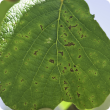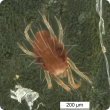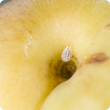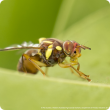Crops
The Department of Primary Industries and Regional Development continues to support the growth and international competitiveness of all crop industries in Western Australia.
With a 2400 kilometre span from its tropical north to its temperate south, WA supports a broad range of cropping industries from rain-fed winter cereals through to irrigated horticultural crops.
In the 2012/13 year the WA cropping industries exported a total of $3.9 billion which comprised: $3.1 billion of cereals, $859 million of pulses, pastures and oilseeds, $142 million of horticultural crops. The major contributors to these exports were wheat ($2.7 billion), canola ($756 million), barley ($377 million), lupins ($42 million), carrots at $48 million, oats ($12 million), and strawberries at $5.5 million.
Filter by search
Filter by topic
- (-) Remove Pests, weeds & diseases filter Pests, weeds & diseases
- (-) Remove Horticulture filter Horticulture
- Pests (86) Apply Pests filter
- Diseases (71) Apply Diseases filter
- Fruit (69) Apply Fruit filter
- Pest insects (67) Apply Pest insects filter
- Vegetables (66) Apply Vegetables filter
- Biosecurity & quarantine (59) Apply Biosecurity & quarantine filter
- Biosecurity (58) Apply Biosecurity filter
- Plant biosecurity (54) Apply Plant biosecurity filter
- Fungi (38) Apply Fungi filter
- Potatoes (36) Apply Potatoes filter
- Grapes & wine (30) Apply Grapes & wine filter
- Citrus (22) Apply Citrus filter
- Table grapes (18) Apply Table grapes filter
- Nursery & cutflowers (17) Apply Nursery & cutflowers filter
- Cabbage (16) Apply Cabbage filter
- Wine grapes (14) Apply Wine grapes filter
- Pome fruit (13) Apply Pome fruit filter
- Viruses & virus-like (11) Apply Viruses & virus-like filter
- Stone fruit (11) Apply Stone fruit filter
- Cauliflower (9) Apply Cauliflower filter
- Mites & spiders (8) Apply Mites & spiders filter
- Strawberries (8) Apply Strawberries filter
- Tomatoes (8) Apply Tomatoes filter
- Carrots (8) Apply Carrots filter
- Chinese cabbage (8) Apply Chinese cabbage filter
- Broccoli (8) Apply Broccoli filter
- Brussels sprouts (8) Apply Brussels sprouts filter
- Nematodes (7) Apply Nematodes filter
- Crop diseases (7) Apply Crop diseases filter
- Bacteria (7) Apply Bacteria filter
- Bananas (7) Apply Bananas filter
- Quarantine (6) Apply Quarantine filter
- New horticulture crops (6) Apply New horticulture crops filter
- Minor fruits (6) Apply Minor fruits filter
- Emergency response (6) Apply Emergency response filter
- Production & postharvest (5) Apply Production & postharvest filter
- Grains (5) Apply Grains filter
- Capsicums and chillies (4) Apply Capsicums and chillies filter
- Olives (4) Apply Olives filter
- Control methods (4) Apply Control methods filter
- Irrigated crops (3) Apply Irrigated crops filter
- Livestock & animals (3) Apply Livestock & animals filter
- Importing to Western Australia (3) Apply Importing to Western Australia filter
- Agricultural emergency response (3) Apply Agricultural emergency response filter
- Agricultural emergency preparedness (3) Apply Agricultural emergency preparedness filter
- Food & beverages (3) Apply Food & beverages filter
- Food safety (3) Apply Food safety filter











